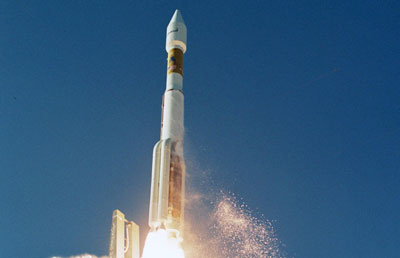The commercial launch industry needs a boostby Douglas O. Jobes
|
| The race to be the first group to build a permanent Moon base would create unprecedented demand for launch services and for the construction of supportive space infrastructure. |
That there are difficult days ahead for the launch industry is unfortunate, especially since the coming doldrums could be prevented, and in fact reversed, by appropriate Congressional action. Now that the satellite market is becoming saturated, exponential growth in the launch industry could be reignited if a replacement incentive came online. What could that incentive be? It could well be the construction of the space infrastructure that will be needed to return humanity to the Moon, infrastructure—the transportation, utility, and facility structures—that will also be needed by the space-based businesses of the future.
In 1998, NASA sponsored a New Space Industries Workshop to peer into the future of space development. The final report of the workshop, titled New Space Industries for the Next Millennium, evaluated future space businesses such as tourism, space manufacturing, satellite services, space solar power, and more. The report makes fascinating reading. Today, though—seven years later—most of these businesses still do not exist, even in nascent form, in large part because the startup costs for building the necessary space infrastructure are simply prohibitive.
The Space Settlement Institute has already proposed a plan that would create a new space race, this time a commercial one, using the prospect of billions of dollars worth of lunar real estate as the incentive for the first private consortium to establish a permanent Moon base and regular spaceline. The race to be the first group to build a permanent Moon base would create unprecedented demand for launch services and for the construction of supportive space infrastructure. What is needed now is support in Congress for the legislation that would make it happen.
Without a multi-billion dollar incentive of some kind, the ascension of commercial enterprise into space will be long, slow, and painful, and may never reach its full potential. Meanwhile, the companies in the commercial launch industry will, for the next decade on out, find themselves embroiled in a dog-eat-dog competition just to keep their efforts in the black, when instead they should be reaping the mega-profits of the next frontier.
